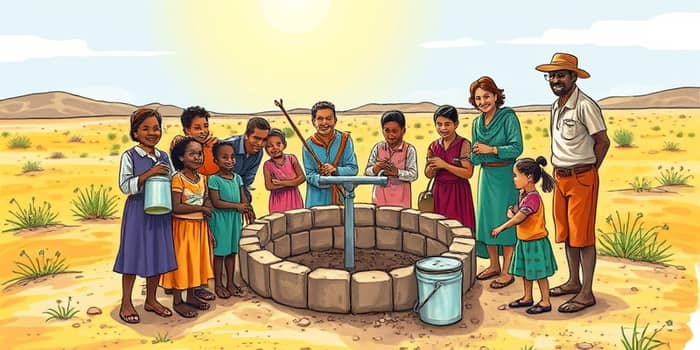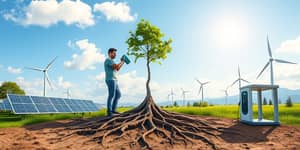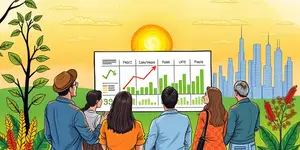
Ensuring safe, reliable water is one of humanity’s greatest challenges and most powerful opportunities. Across continents, communities rise and fall by their ability to secure clean water. This article explores the stakes, the investments, and the path forward toward universal access.
Access to drinking water remains elusive for too many. As of 2025, 703 million people worldwide lack basic safe water sources, equating to one in eleven people on the planet. When holding systems to stricter safety standards, the challenge grows even larger: an estimated 2 to 4.4 billion people lack safely managed drinking water in their homes, schools, or clinics.
Geography shapes inequality. In Sub-Saharan Africa, only 32% of residents enjoy clean taps, while many others trek miles daily to gather water. Around 2.2 billion people live in water-stressed nations, where annual extraction exceeds 25% of renewable resources. By this year, 1.8 billion people face absolute water scarcity, unable to meet basic needs even during normal seasons.
The human cost is staggering. Women and girls spend 250 million hours daily collecting water, often walking six kilometers while carrying loads over 44 pounds. More than 1,000 children under five die every day from water-related diseases, and 419 million people still practice open defecation. Health, education, gender equity, and economic security are all undermined when water fails.
Building and maintaining water systems demands capital. Encouragingly, 96% of sector leaders plan to maintain or increase their water investments in 2025 versus 2024. Thirty percent of major firms invested over $500 million in water projects last year alone, demonstrating growing corporate commitment.
Yet the global funding gap remains in the trillions of dollars. Investments must cover new infrastructure, upgrade aging pipes, integrate cutting-edge technologies, and ensure equitable distribution. In the United States, the Infrastructure Investment and Jobs Act allocated over $50 billion to water initiatives—the largest infusion in history.
Several hurdles stand between us and universal water access. Rapid population growth and urbanization surge demand, while agriculture and industry compete fiercely for dwindling supplies. Climate change intensifies droughts and floods, further destabilizing water sources.
Innovative approaches and proven models demonstrate the power of investment. NGO-led projects show that for about $50 per person equipped with safe water, communities can gain sustainable services and hygiene training. Such programs dramatically reduce childhood illness, boosting school attendance and economic productivity.
Public-private partnerships have brought smart metering technologies to rural towns, cutting water losses by 30% and saving millions in operational costs. Community-led ecosystem restoration—reforesting watersheds and protecting wetlands—helps recharge aquifers naturally, providing long-term resilience.
Successful initiatives share common features:
Achieving Sustainable Development Goal 6 demands acceleration on multiple fronts. The UN target of universal clean water and sanitation by 2030 can slip away without bold moves. Governments, NGOs, investors, and communities must unite around shared objectives.
Investment in water is more than charity—it’s an economic catalyst. For each dollar spent on WASH programs, studies show returns of up to $4 in saved healthcare costs and increased productivity. Clean water unlocks opportunities: healthier children learn better, women regain time for schooling or work, and farmers grow more food with efficient irrigation.
Water is life. The choices we make today will define whether billions flourish or suffer. By directing resources, driving innovation, and empowering communities, we can close the gap between scarcity and plenty. The path is clear: sustained investment, smart policies, and unwavering collaboration can deliver clean water for all. Let us seize this moment—our shared future depends on it.
References













